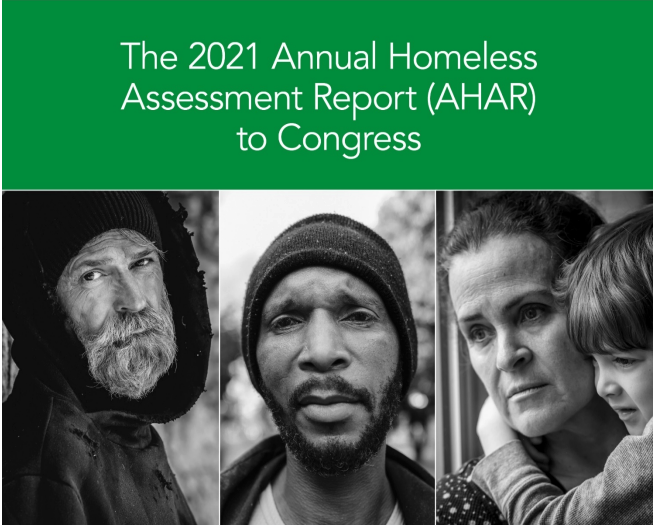This information was originally distributed via HUD.gov. msbos.org is redistributing the information for awareness.
HUD released Part One of its 2021 Annual Homeless Assessment Report (AHAR) to Congress. The report found that more than 326,000 people experienced homelessness in the United States on a single night in 2021, a decrease of eight percent, from 2020.
“Sheltered homelessness” refers to people experiencing homelessness who were found in emergency shelters, transitional housing, or other temporary settings. In response to the COVID-19 pandemic, HUD waived the requirement for communities to conduct the count of unsheltered homelessness in 2021. In January 2021, 138 communities, 36 percent of all communities, conducted full unsheltered counts and an additional 72 communities conducted a partial count, in which total unsheltered counts were reported but not household or demographic characteristics. Therefore, 2021 AHAR Report – Part One is only able to provide national estimates on sheltered homelessness and findings on unsheltered homelessness only from the communities that conducted unsheltered counts.
The report found that the number of sheltered people in families with children declined considerably between 2020 and 2021, while the number of sheltered individuals remained relatively flat. Between 2020 and 2021, the number of veterans experiencing sheltered homelessness decreased by 10 percent. On a single night in 2021, 15,763 people under the age of 25 experienced sheltered homelessness on their own as “unaccompanied youth.” The number of sheltered individuals with chronic patterns of homelessness increased by 20 percent between 2020 and 2021.
Read the full Press Release for quotes from the HUD Secretary Marcia L. Fudge and the Department of Veterans Affairs (VA) Secretary Denis McDonough as well as key findings.




Leave a Reply